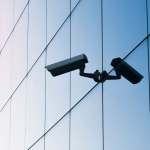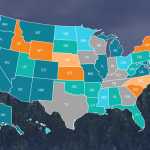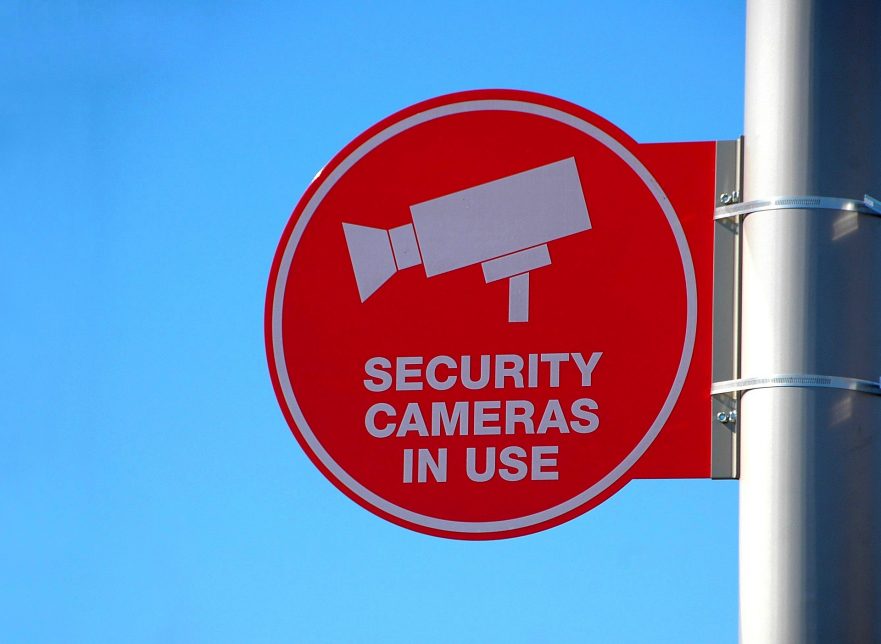While reactive security measures are a foundational part of any business, proactive security measures have been increasing in popularity due to recent technological advancements in the security industry. Reactive security measures are those used to respond to a crime after it occurs, but proactive security measures seek to prevent the crime from ever occurring. Reactive and proactive security measures serve different roles in a business’ security strategy, but are both essential in securing people, products, and properties.
What is Proactive Security?
Proactive security measures are effective in deterring crime and can also save the business money in the long run. These measures can defend against both internal and external threats by providing a physical or visible deterrent to potential criminals. This often includes the use of conspicuously placed video cameras and signage alerting individuals on the property of the security measures in use. When criminals are aware of the heightened security measures in place at the business, they are more likely to choose an easier target with less security measures in place.
Though some security is required by law in some highly-regulated industries like cannabis, many businesses must decide for themselves if they are going to invest in their security. Implementing only the bare-minimum reactive security measures may help the business remain compliant, but can also open the business up to theft and loss longterm.
Examples of Proactive Security Measures
Video surveillance systems can provide a visible deterrent because people are less likely to attempt a crime if they know they are being recorded on the video surveillance system. The recorded footage provided by these systems is also effective in proactively improving security by providing an overview of the facility to identify potential risks.
Proactive video monitoring is a relatively new security advancement, but can be used to monitor the facility in real-time and provide an auditory intervention when someone enters the property. This is effective in deterring potential loiterers and criminals at the perimeter of the property, before they are able to enter the business.
Employee background checks can help ensure that employees are competent and trustworthy individuals, thus proactively preventing those who would divert valuables or funds from being hired.
Employee training is an essential component of proactive security, and should be completed within 30 days of hire and repeated annually.
Written policies and procedures help reduce risks and losses before they occur by ensuring that all staff are prepared in the event of a robbery or other crime, natural disaster, or other type of emergency that could reasonably occur at the workplace. Written policies and procedure also reduce liability in the event that an incident does occur.
On-site security risk assessments are beneficial to any size business and can serve as a way to identify risks and improve security operations before incurring losses.
Proactive Security vs. Reactive Security
Unlike proactive security measures, reactive measures are typically only useful after an incident. Reactive security measures include security personnel and alarm systems that are used in response to an incident, not to prevent an incident. While these personnel and alarm system devices can act as a proactive visible deterrent to crime, their main purpose is reactionary.
Proactive security also comes into play with the “4 D’s of Security,” which are: deter, detect, delay, and deny. Deterring and detecting potential criminals on the property are proactive security measures used to prevent crime from occurring, while delaying (responding to) and denying criminals access to valuables in the facility are reactive security measures.
Reactive security measures are vital after an incident has occurred, but should not be relied on as the only method of security on the property. Security technologies have advanced to allow for proactive security measures that can prevent crime and other incidents before they occur. By implementing both reactive and proactive security measures, business owners can better protect their businesses, people, and valuables.
How Can Sapphire Risk Help?
Tony Gallo and the team of experts and consultants at Sapphire Risk Advisory Group have written hundreds of security plans which feature proactive and reactive security. Follow us on social media to stay up to date with more security best practices!
- California Senate Bill 69 Adds CEQA Requirements for New Cultivators

- Top 5 Cannabis Security and Surveillance Violations

- Peace of Mind in the Retail Sector: Facility Security

- Opportunities in the Ohio (O-High-O) Cannabis Market

- Building Security and Trust: Verifying Identification and Payments

- The Importance of Loss Prevention

- Thoughts to Improve Cannabis Security Regulations Across the Nation

- Opportunities in the Minnesota Cannabis Market

- U.S. Cannabis Legalization 2023 Update

- How to Present Your Cannabis Business Vision to Your City


